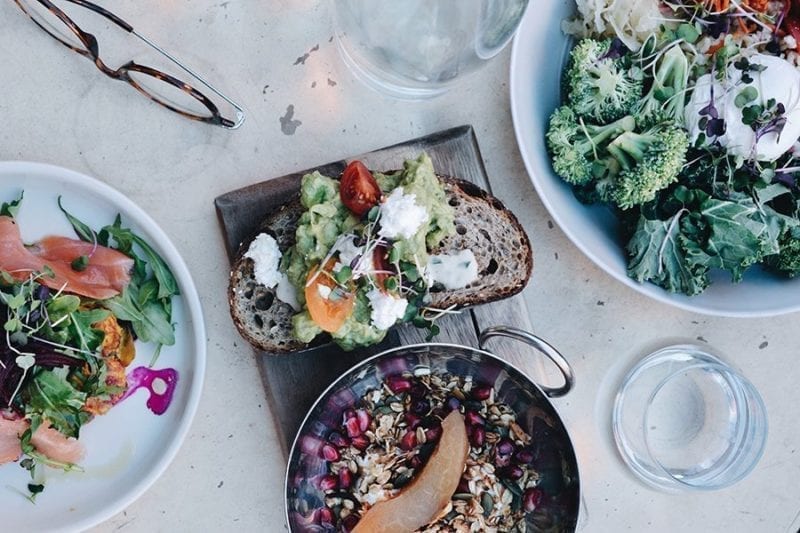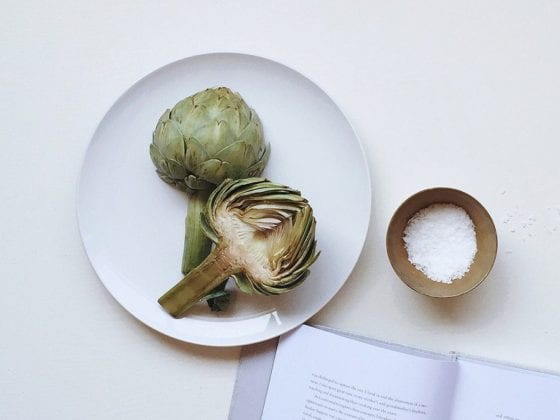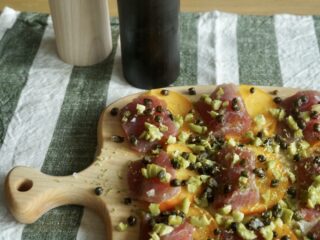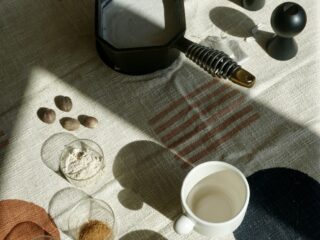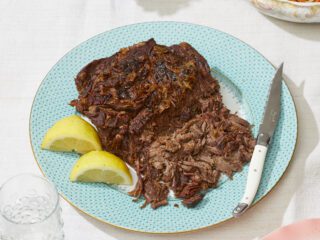A Note From The Editor: We’re so excited to begin sharing content with FabFitFun. Known for their monthly curations of health and beauty products, they also host a wealth of fun reads — ranging from entertainment to wellness — over on their magazine. We thought this article was especially relevant for the wannabe hostess who might be a little too intimidated to cook like a pro. One read-through of the below, however, and you should be well on your way.
Want to become a more romantic cook? The best way to start is by figuring out all those exotic cooking and consuming terms. We’re here to help you learn the basic culinary terminology you should know when cooking in the kitchen (and when ordering at a restaurant).
Check out our guide below:
PHRASES
- A Point: French term for cooking to the ideal of doneness.
- Al Dente: An Italian term that translates to “to the tooth” when describing the doneness of pasta. Pasta should always be tender and never mushy!
- Mise en Place (meez-un-plahs): French, meaning “everything in place.” This is the preparation of all ingredients and equipment before starting to cook, in order to be prepared and organized.
FANCY WORDS ON THE MENU
- À la Carte: French phrase of a menu item that is priced individually.
- Apperitif: Alcoholic beverages served before lunch or dinner that stimulate the appetite. Some traditional drinks are dry sherry, vermouth, and campari.
- Digestif: Alcoholic beverages served after a meal to aid digestion. Types of digestifs include sweet liqueurs, brandy, whiskey, cognac, and fortified wines.
KNIFE CUTS
- The Julienne Cut: This is the smallest stick-cut you can create, and is also known as “the matchstick” cut because of its similar resemblance in shape and size. The cut requires a precise method of slicing your vegetables very thin with the dimensions of 1/16 in. x 1/16 in x 2 in.
- The Bruinoise Dice: The smallest dice you can have. It is just an extension of slicing your julienned-cut pieces at a perpendicular to create a tiny dice. Dimensions are 1/16 in. x 1/16 in. 1/16 in.
- The Baton Cut: As opposed to its mini-me (julienne cut), this is the largest stick-cut you will create with the dimensions of 1/2 in. x 1/2 in. x 2-1/2 in. (From the baton cut, you can create the large dice by simply by cutting the baton at perpendicular…seeing a pattern here?)
- Chiffonade Cut: This type of cut is applied when thinly slicing leafy greens and herbs, such as spinach and mint. Simply stack the leafs, roll them into a cigar-like shape, then slice at perpendicular.
Now that you have a solid culinary vocabulary, get out there and start your foodie adventures!
Bon Appétit!
Image via Urban Koi

